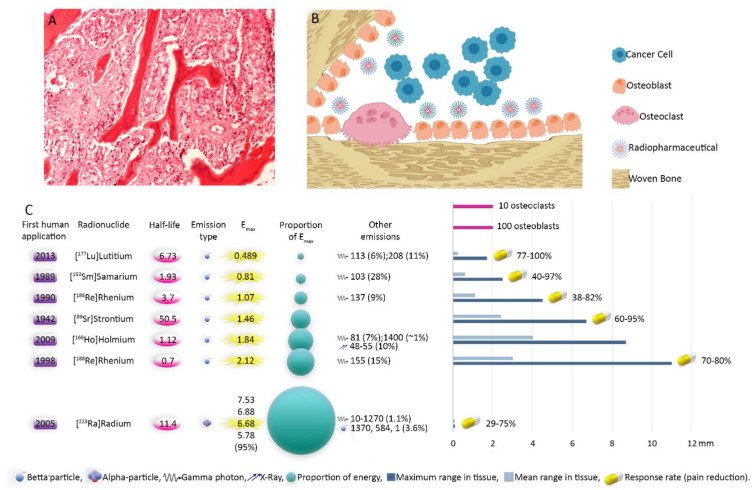Figure 3.
Illustration of bone metastases and physical characteristics of radiopharmaceuticals. Cancerous cells from prostate origin produce cytokines activating osteoblasts. On the other hand, their homing is facilitated by secreted factors from osteoblasts. In addition, chemoattractants created by newly formed bone matrix increase the invasiveness of cancer cells. This cycle continues destructing the bone. Bone-seeking radiopharmaceuticals reside in regions with bone turn over. Accumulation of radiopharmaceuticals in the osteoblastically active regions, which is induced or increased significantly by tumoral cells infiltration, leads in mainly irradiation of metastatic sites with only minimal impact on the normal tissues. Eventually, the tumoral tissues shrink, osteoblastic activity is inhibited and stimulation of the periosteal pain receptors is reduced [10,31]. (A) Histopathology image of bone metastasis; (B) schematic illustration of bone metastasis with predominant osteoblastic proliferation. Note the accumulation of radiopharmaceuticals in areas with osteoblastic activity. Depending on the range of the agent, the cancerous and normal cells will be affected; (C) physical characteristics and efficiency of radiopharmaceuticals. The response rates (Table 1) pertain to bone-seeking pharmaceuticals labeled with the mentioned radionuclides. Emax: Maximum particle energy. First human application [21,89,118,143,144,145].

